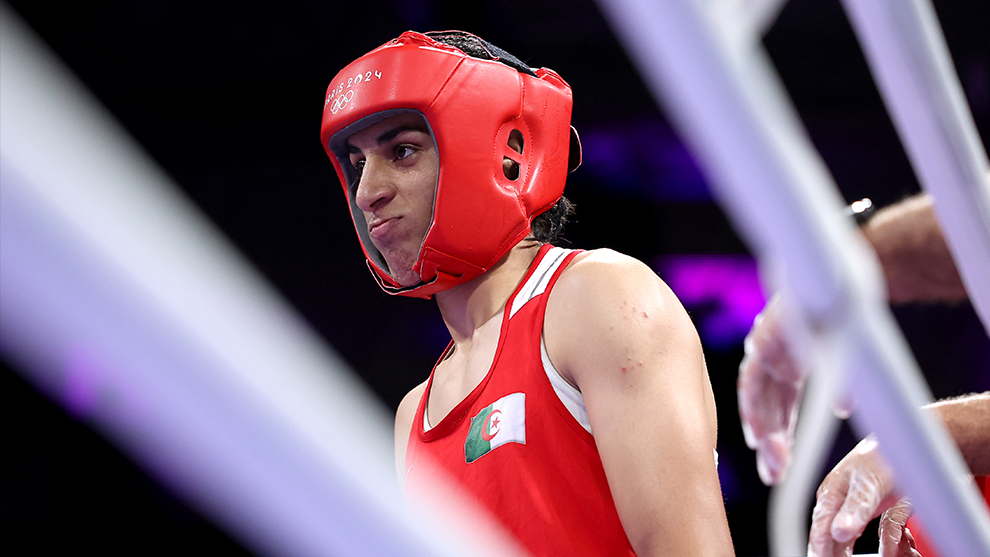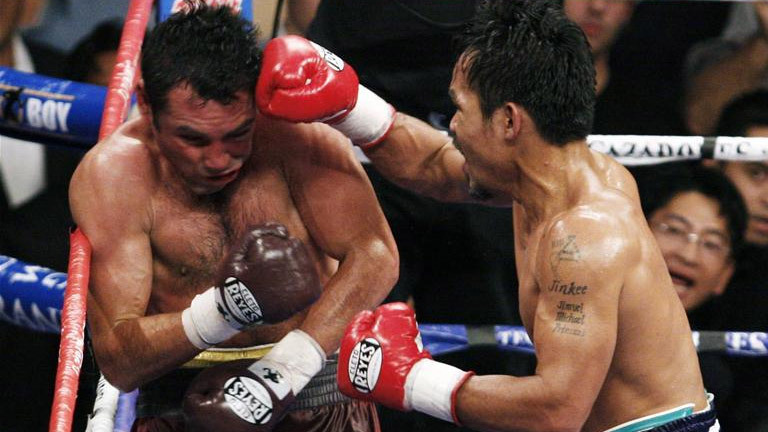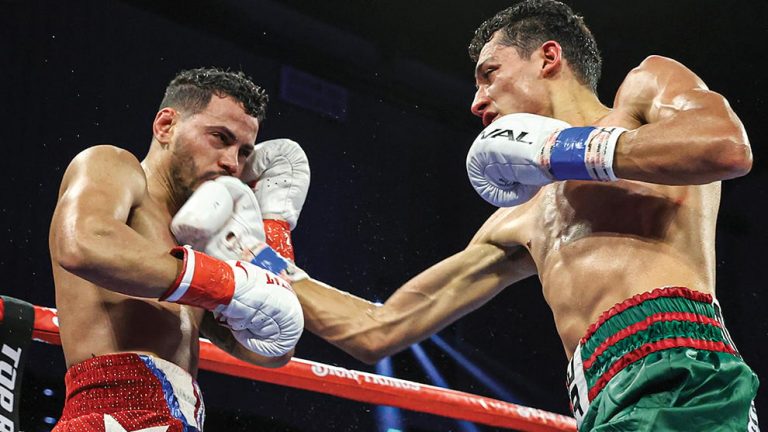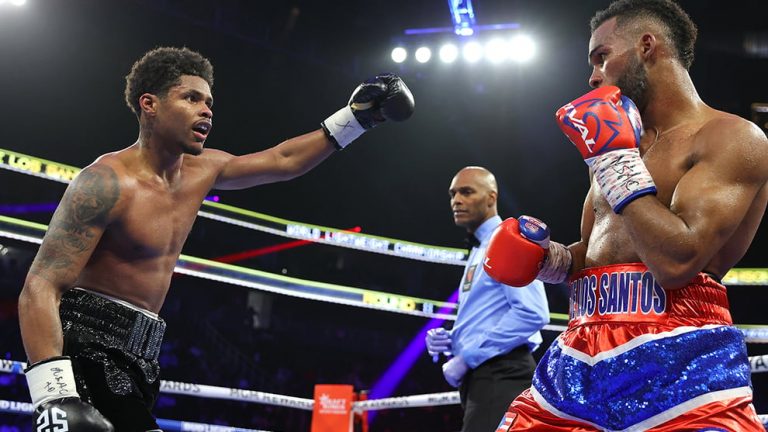Gender storm blights Paris 2024
By Mark Butcher
The Olympics and controversy share the same DNA. As mad as it may seem, the endless corruption and political disputes of the Games surpass anything we can conjure up in pro boxing.
The five rings are a veritable magnet to toxicity. It’s a tournament of infamy, from Hitler’s Sieg-Heiling propaganda machine in Berlin 1938 and his grim visage as Jesse Owens won gold, to Ben Johnson blowing away the 100 metres field when doped to the gills in Seoul 1988, and a masterful Roy Jones Jr being shafted out of gold after the judges were taken on a jolly boy’s outing by the host nation.
In these three events we have the true, unholy trinity of Olympic values – xenophobia, performance-enhancing drug use, and corruption. Pro boxing seems clean cut in comparison. Almost. Yet Olympic history somehow took another dark turn this week with the barely believable gender saga of Algeria’s Imane Khelif and Taiwan’s Lin Yu-Ting, who have both since medalled.
Unless you’ve been hiding under a rock this week (and I’d strongly recommend that strategy, given the events of the past seven days), the Algerian’s gender eligibility, in particular, has been the subject of intense, worldwide scrutiny.
Following concerns by other athletes, the duo were banned by the International Boxing Association (IBA) from the 2023 Delhi World Championships over gender irregularities – the same IBA that is so marred by scandal that it was barred in 2019 from organising any further Olympic boxing tournaments. The International Olympic Committee (IOC) has overseen boxing in this Olympiad and in Tokyo 2020, but the sport is facing potential exclusion from the next Games in Los Angeles 2028.
As the two bodies joust for the moral high ground, the IBA believes Khelif and Lin should be banned, and the IOC is championing their right to fight. This disagreement has cast a stormcloud over both athletes’ participation.

Imane Khelif of Team Algeria looks on prior to the Women’s 66kg Quarter-final round match against Anna Luca Hamori (Photo by Richard Pelham/Getty Images)
IBA Chief Executive Chris Roberts told the BBC that male XY chromosomes were found in “both cases”, while adding that the IBA could not commit to calling them “biologically male”. The IOC, however, doubts the accuracy of the IBA’s testing procedures. “We don’t know what the protocol was, we don’t know whether the test was accurate, we don’t know whether we should believe the test,” rebuffed IOC spokesperson Mark Adams. “There’s a difference between a test taking place and whether we accept the accuracy or even the protocol of the test.”
The IBA ban, combined with Khelif and Lin’s masculine appearance, caused allegations to spread like wildfire through social media where the court of opinion chose to skate over the cases’ complexities. JK Rowling, an expert on wizards and pointy hats, was among those triggered, dubbing Khelif a man- slash-trans athlete with no proof.
During that 2023 event in Delhi, under-fire IBA president Umar Kremlev insisted DNA tests had “proved” Khelif and Lin “had XY chromosomes and were thus excluded from the sports events”. This could make them DSD (Difference of Sexual Development) athletes, giving them an advantage over their female rivals in strength, muscle mass and increased testosterone levels.
DSD athletes can have a X and Y chromosome in each cell (a typically male pattern) and male-range testosterone levels, as well as genitalia
that is not conventionally male or female. This isn’t as rare as one would think, as the Children’s National Hospital in Washington DC say it affects one in 100 newborns.
The lines here are maddeningly blurred. Yet for many this is a black and white issue, choosing to believe the as-yet unsubstantiated claims of the disgraced IBA over the embattled IOC. The world is in a state of political polarisation where even boxing, traditionally a sport of rights and lefts, is also leaning more far right and far left.
I strongly believe in freedom of speech and that views on all sides should be heard, but every shot should be backed up by facts and a coherent argument for it to have any credibility. The reality is we have no idea about Khelif and Lin’s eligibility when the IBA and IOC hold such contrasting views.
The most striking image of these games came when Khelif, historically a non-puncher (five KOs in over 50 bouts), stopped Angela Carini in the
opening round with the Italian turning away from further punishment. It was at this point where influential voices in boxing presented, as cast-iron fact, that the Algerian was a man or transgender athlete beating up on women.
Anyone with the wherewithal to launch a Google search would discover that the right to change gender in Algeria is illegal and there is a snowball’s chance in Algiers that a transgender athlete would be representing this steadfast Muslim nation, who remain proudly in support
of their fighter. An instance of DSD is more possible. A tearful and emotional Khelif proudly declared: “I am a woman” after reaching the semi-finals.
Yet Khelif was still labelled a man by voices who should know better, seeking to further their agenda with no desire to deep-dive the issue,
playing to a gallery of prejudice and hate. This issue remains deeply nuanced. Perhaps crucially, South African middle-distance runner Caster
Semenya, a DSD athlete, was instructed (but refused) to take hormone medication to reduce her natural testosterone.
The consequences of a DSD boxer in such a destructive, contact sport are far bleaker. No one born as man should be physically fighting a woman in any context, let alone elite sporting competition. And anyone born with a chromosome imbalance and advantage should not
be involved in a female combat sport.
But the political impasse between the IBA and the IOC, and resulting lack of clarity, means we have insufficient evidence to make a judgement.
Without this illumination, we are none the wiser – so, until any facts surface, leave those inflammatory tweets in drafts or delete them altogether. We must retain an open mind until this story plays out to its natural conclusion.




